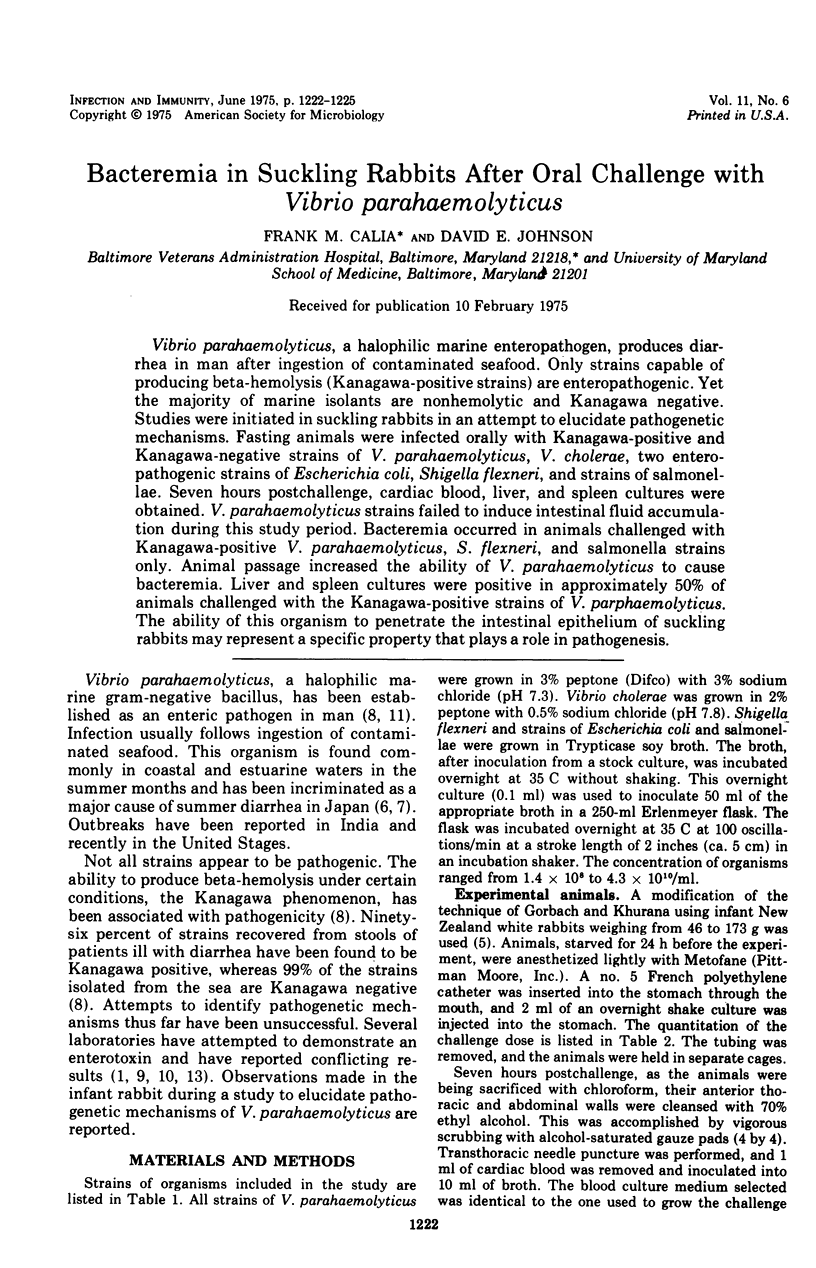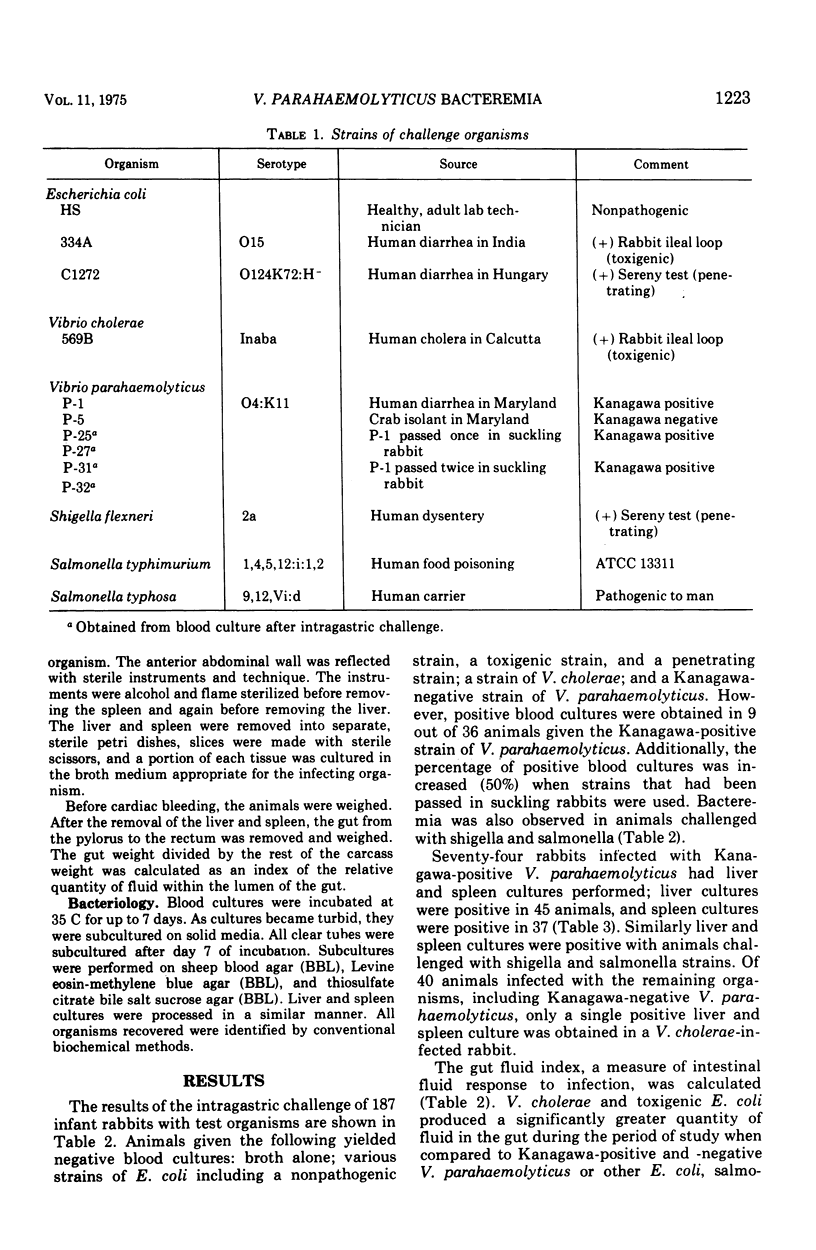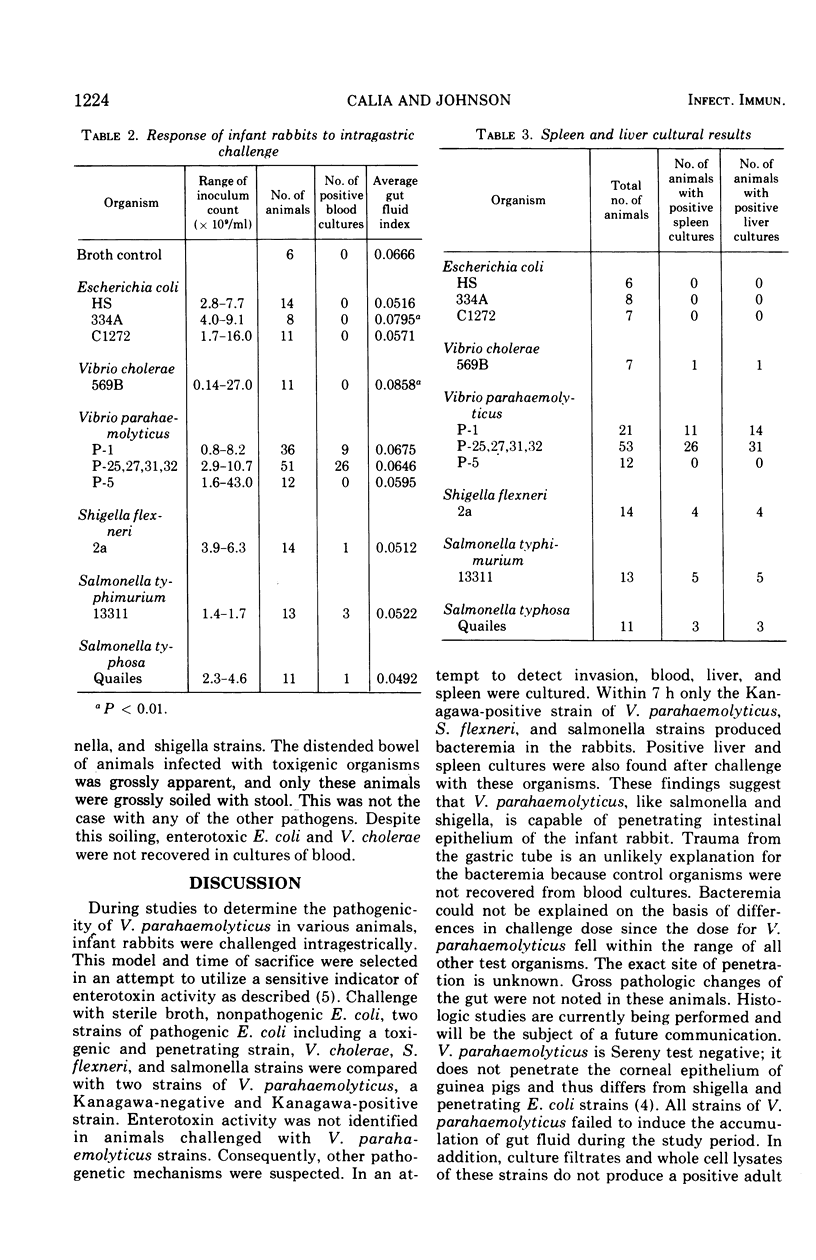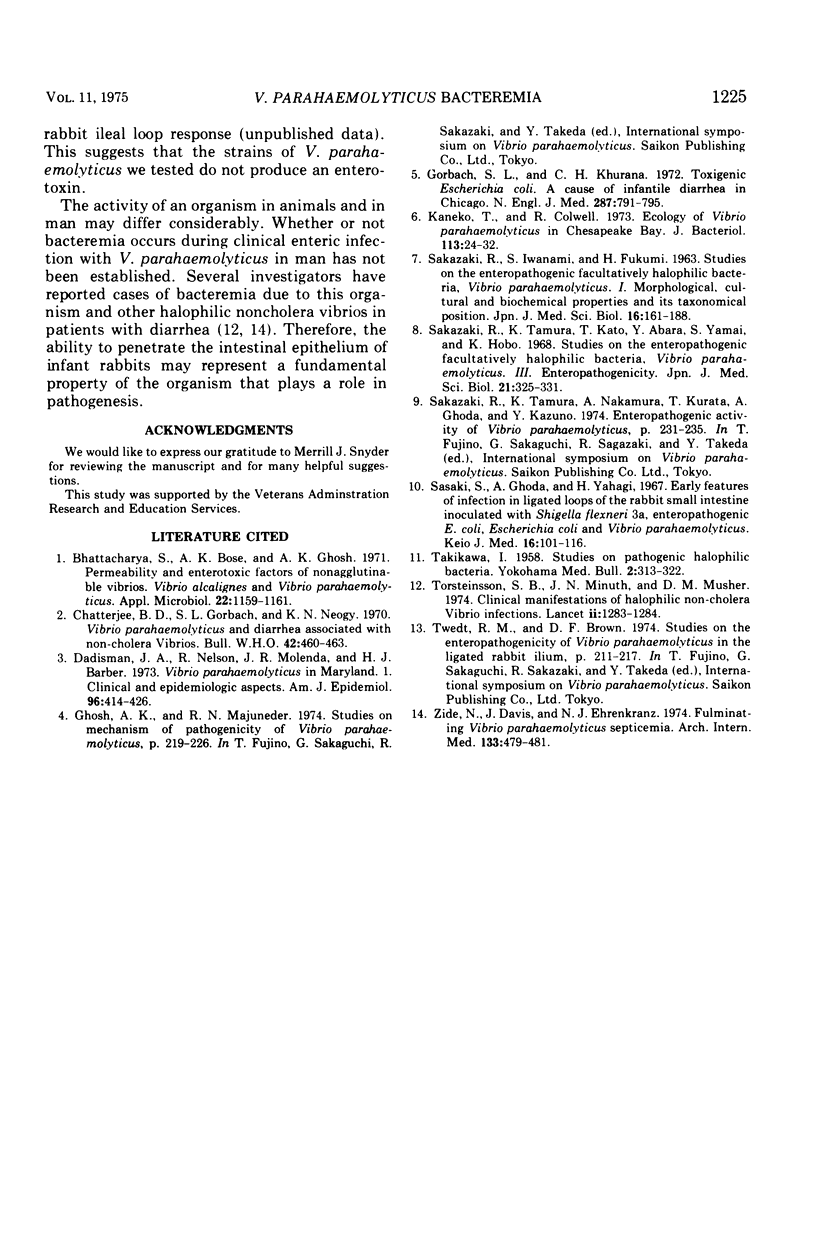Abstract
Vibrio parahaemolyticus, a halophilic marine enteropathogen, produces diarrhea in man after ingestion of contaminated seafood. Only strains capable of producing beta-hemolysis (Kanagawa-positive strains) are enteropathogenic. Yet the majority of marine isolants are nonhemolytic and Kanagawa negative. Studies were initiated in suckling rabbits in an attempt to elucidate pathogenetic mechanisms. Fasting animals were infected orally with Kanagawa-positive and Kanagawa-negative strains of V. parahaemolyticus, V. cholerae, two enteropathogenic strains of Escherichia coli, Shigella flexneri, and strains of salmonellae. Seven hours postchallenge, cardiac blood, liver, and spleen cultures were obtained. V. parahaemolyticus strains failed to induce intestinal fluid accumulation during this study period. Bacteremia occurred in animals challenged with Kanagawa-positive V. parahaemolyticus, S. flexneri, and salmonella strains only. Animal passage increased the ability of V. parahaemolyticus to cause bacteremia. Liver and spleen cultures were positive in approximately 50% of animals challenged with the Kanagawa-positive strains of V. parphaemolyticus. The ability of this organism to penetrate the intestinal epithelium of suckling rabbits may represent a specific property that plays a role in pathogenesis.
Full text
PDF



Selected References
These references are in PubMed. This may not be the complete list of references from this article.
- Bhattacharya S., Bose A. K., Ghosh A. K. Permeability and enterotoxic factors of nonagglutinable vibrios Vibrio alcaligenes and Vibrio parahaemolyticus. Appl Microbiol. 1971 Dec;22(6):1159–1161. doi: 10.1128/am.22.6.1159-1161.1971. [DOI] [PMC free article] [PubMed] [Google Scholar]
- Chatterjee B. D., Gorbach S. L., Neogy K. N. Vibrio parahaemolyticus and diarrhoea associated with non-cholera vibrios. Bull World Health Organ. 1970;42(3):460–463. [PMC free article] [PubMed] [Google Scholar]
- Dadisman T. A., Jr, Nelson R., Molenda J. R., Garber H. J. Vibrio parahaemolyticus gastroenteritis in Maryland. I. Clinical and epidemiologic aspects. Am J Epidemiol. 1972 Dec;96(6):414–426. doi: 10.1093/oxfordjournals.aje.a121474. [DOI] [PubMed] [Google Scholar]
- Gorbach S. L., Khurana C. M. Toxigenic Escherichia coli: a cause of infantile diarrhea in Chicago. N Engl J Med. 1972 Oct 19;287(16):791–795. doi: 10.1056/NEJM197210192871603. [DOI] [PubMed] [Google Scholar]
- Kaneko T., Colwell R. R. Ecology of Vibrio parahaemolyticus in Chesapeake Bay. J Bacteriol. 1973 Jan;113(1):24–32. doi: 10.1128/jb.113.1.24-32.1973. [DOI] [PMC free article] [PubMed] [Google Scholar]
- SAKAZAKI R., IWANAMI S., FUKUMI H. STUDIES ON THE ENTEROPATHOGENIC, FACULTATIVELY HALOPHILIC BACTERIA, VIBRIO PARAHAEMOLYTICUS. I. MORPHOLOGICAL, CULTURAL AND BIOCHEMICAL PROPERTIES AND ITS TAXONOMICAL POSITION. Jpn J Med Sci Biol. 1963 Aug;16:161–188. doi: 10.7883/yoken1952.16.161. [DOI] [PubMed] [Google Scholar]
- Sakazaki R., Tamura K., Kato T., Obara Y., Yamai S. Studies on the enteropathogenic, facultatively halophilic bacterium, Vibrio parahaemolyticus. 3. Enteropathogenicity. Jpn J Med Sci Biol. 1968 Oct;21(5):325–331. doi: 10.7883/yoken1952.21.325. [DOI] [PubMed] [Google Scholar]
- TAKIKAWA I. Studies on pathogenic halophilic bacteria. Yokohama Med Bull. 1958 Oct;9(5):313–322. [PubMed] [Google Scholar]
- Thorsteinsson S. B., Minuth J. N., Musher D. M. Clinical manifestations of halophilic non-cholera Vibrio infections. Lancet. 1974 Nov 30;2(7892):1283–1284. doi: 10.1016/s0140-6736(74)90141-x. [DOI] [PubMed] [Google Scholar]
- Zide N., Davis J., Ehrenkranz N. J. Fulminating vibrio parahemolyticus septicemia. A syndrome of erythemia multiforme, hemolytic anemia, and hypotension. Arch Intern Med. 1974 Mar;133(3):479–481. doi: 10.1001/archinte.133.3.479. [DOI] [PubMed] [Google Scholar]


